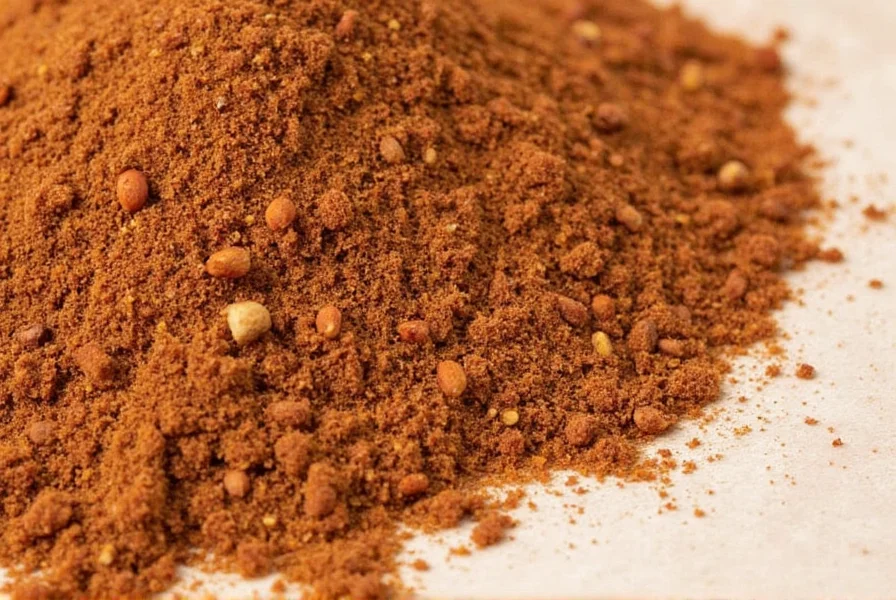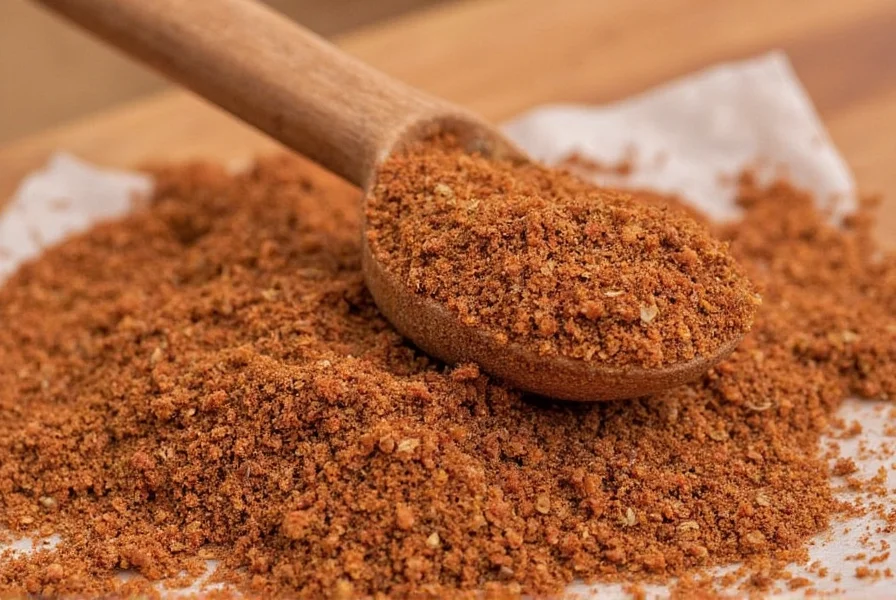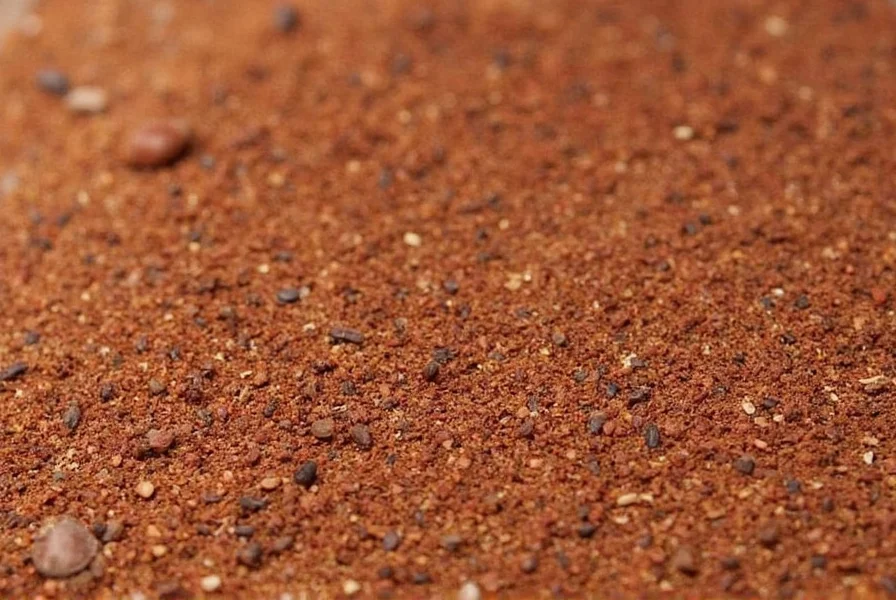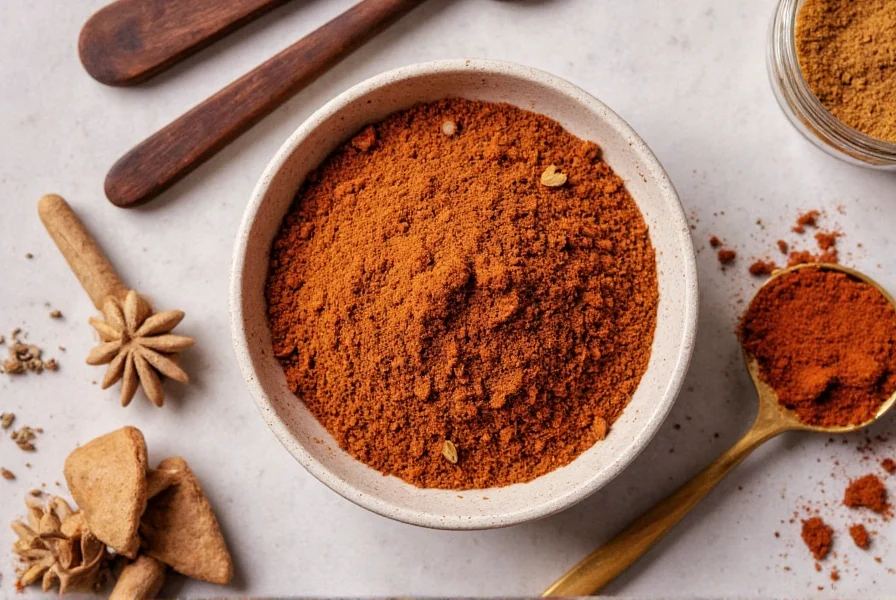Get the perfect Memphis dry rub recipe with just 7 simple ingredients! This authentic spice blend delivers smoky, sweet, and savory flavor for ribs, pork, chicken, and more. Follow this easy step-by-step guide to create restaurant-quality BBQ at home.
| Ingredient | Amount | Role |
|---|---|---|
| Smoked paprika | 2 tbsp | Provides deep smoky flavor and rich color |
| Brown sugar | 1/4 cup | Adds sweetness and creates a caramelized crust |
| Garlic powder | 1 tbsp | Enhances savory depth and umami |
| Onion powder | 1 tbsp | Complements garlic for balanced flavor |
| Mustard powder | 1 tbsp | Binds spices and adds tangy complexity |
| Black pepper | 1 tbsp | Provides sharp bite and balances sweetness |
| Salt | 1 tsp | Seasons and draws moisture for better flavor absorption |
How to Make Memphis Dry Rub
- Combine all ingredients in a bowl
- Mix thoroughly until fully integrated
- Test flavor by sprinkling on bread or potato
- Store in an airtight container away from light
Application Tips
- Pat meat dry before applying rub
- Use 1-2 tablespoons per pound of meat
- Let rest 2 hours minimum (overnight for best results)
- Apply evenly to all surfaces for consistent flavor
| Product | Key Feature | Best For |
|---|---|---|
| McCormick Smoked Paprika | Naturally smoked over oak wood | Authentic smoky flavor |
| Simply Organic Garlic Powder | Non-GMO, pure aroma | Savory depth enhancement |
| Bobs Red Mill Mustard Powder | Strong pungency and vibrant color | Binding and flavor complexity |
Storage & Freshness
- Store in airtight glass jars
- Keep away from heat and sunlight
- Use within 6 months for peak flavor
- Check scent regularly - dull smell means replace
Variations
- Heat Boost: Add 1/2 tsp cayenne for extra spice
- Applewood Twist: Mix in 1 tsp applewood smoked salt
- Veggie Version: Reduce salt by half, add smoked turmeric
FAQ
What makes Memphis dry rub different from other BBQ rubs?
Unlike Kansas City-style rubs that rely on tomato-based sauces, Memphis dry rubs focus on a balanced blend of sweet (brown sugar), smoky (paprika), and savory elements without liquid ingredients. This creates a flavorful crust (bark) on the meat rather than a saucy finish.
How long should I let the rub sit on meat?
For best results, apply the rub 2 hours before cooking. Overnight refrigeration (8-12 hours) allows deeper flavor penetration, especially for larger cuts like pork shoulder.
Can I use this on chicken or fish?
Absolutely! While traditionally used for pork, this rub works well on chicken, turkey, and firm fish like salmon. For delicate proteins, reduce salt slightly and avoid over-applying.
Why is there no liquid in Memphis dry rub?
Authentic Memphis barbecue uses dry rubs to form a crust during cooking. Liquid ingredients would prevent bark formation and dilute the spice flavors. Some pitmasters spray with apple juice during cooking, but the rub itself remains dry.
How much rub should I use per pound of meat?
Use 1 tablespoon per pound for most meats. For ribs, apply 2 tablespoons per pound to ensure full coverage. Remember some rub will fall off during cooking, so generous application is key.














 浙公网安备
33010002000092号
浙公网安备
33010002000092号 浙B2-20120091-4
浙B2-20120091-4